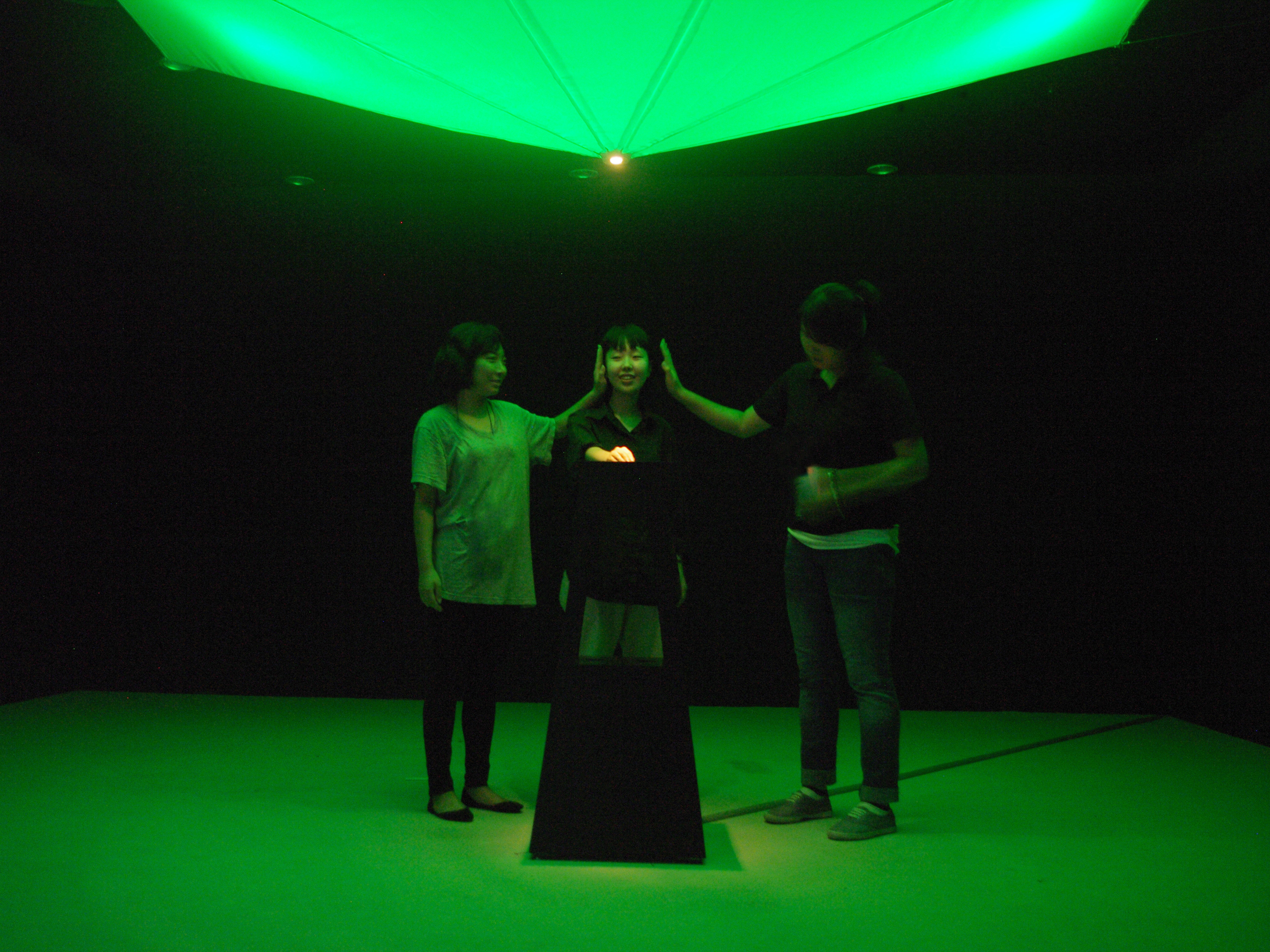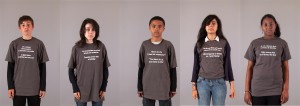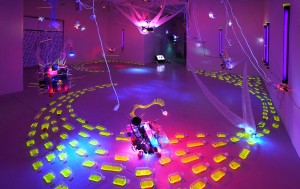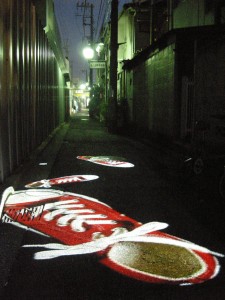exhibition review: experimenta ‘speak to me’ fifth biennial of new media art
Speak to Me may strike you as a curious choice for the title of a biennial of new media art. Today, we communicate with one-another through so many means that speaking seems old-fashioned. This tension between technology and humanity underlies Experimenta’s Speak to Me Fifth Biennial of New Media Art, currently showing in Melbourne, before touring nationally.
Since its inception twenty five years ago, Experimenta has spearheaded a number of projects that combine contemporary art and technology. Speak to Me, curated by Abigail Moncrieff, is no exception. The Biennial showcases experimental new media art from Australian and international artists at varying stages of their careers: from the emerging Melbourne artist Katie Turnbull to the acclaimed Japanese engineer Hiroshi Ishiguro.
Speak to Me is one of those biennials that warrant re-visiting. This is particularly true of the main exhibition site, the RMIT Gallery. It is easy to walk past the screens and monitors in the gllery without engaging with the content they project. Yet, when given full attention, I was continually impressed, surprised and engaged by the works on show and the ideas they evoked. Perhaps this reflects the ways in which we engage with technology. With such ready access to a wealth of data – and people – we can all too easily forget that information is only as useful as how much attention we give to it; just because we can access something doesn’t mean we fully engage with or understand it.

Scenocosme (France)
Lights Contacts (installation view) 2010
Interactive installation
Image courtesy and © the artists
A number of works featured in Speak to Me use technology to explore intimacy, memory and nostalgia. This is seen in the work of French duo Scenocosme, who offer an alternative take on intimacy with their interactive installation Lights Contacts (2010). Visitors enter a small gallery featuring a silver ball located on a plinth. Touch the ball, and nothing happens. Touch the ball whilst someone also touches your skin, and a wave of coloured light illuminates the dome above the work. Lights Contacts playfully confronts the idea that technology negates the need for the human touch; the work is lifeless without at least two participants.

Sylvie Blocher (France)
10 Minutes of Freedom 2 (still) 2010
HD video installation, sound 41’00”
Image courtesy and © the artist
The role technology plays in communication is explored in Sylvie Blocher’s video 10 Minutes of Freedom 2 (2010). Socially marginalised French citizens stand impassively in front of the camera wearing t-shirts with the same phrase printed in both English and French. Of this work Moncrieff commented that Blocher ‘releases the subjects from what they can’t speak about’: the words on their shirts thus express thoughts they do not dare speak.
Displayed across multiple venues, Speak to Me encourages active visitor engagement. While the bulk of the Biennial is exhibited at the RMIT Gallery, a wander through Melbourne takes audiences to different venues that showcase site-specific works: the Australian Centre for the Moving Image, NGV International and Federation Square, to name a few. Moncrieff ‘s observation that the layout of the Biennial is all about cultivating an ‘experience’ based on ‘the relationship between works’ reflects this multi-site nature. I enjoyed feeling as though I was embarking on an adventure as I visited each site of the biennial. Yet, I found the RMIT Gallery an awkward space for the exhibition, as it felt overcrowded. This was compounded by the fact that a number of the works are video-based with accompanying sound tracks, or are interactive, thereby occupying more physical and psychological space than fixed and inanimate artworks.

Shih Chieh Huang (Taiwan/United States)
EX-DD-06 (installation view) 2006
Mixed media, 74 square metres
Image courtesy and © the artist
Coming back to the title Speak to Me and what it suggests, there was one work that did – in fact – speak to me: Shih Chieh Huang’s Slide to unlock ( 2012). Entering into the side gallery where the work is displayed sets off a neon symphony; re-purposed technology and computer fans provide the acoustics whilst recycled drink bottles filled with mysterious green liquid seem to magically float like air-born creatures from the ceiling. For Moncrieff, the ‘emotive robotics are connected to our everyday lives and the things we use’. Perhaps this ability to make something compelling out of the ordinary is what makes this work so appealing. After all, isn’t art all about helping us understand and appreciate the world in which we live? Speak to Me contributes to this enduring enquiry, and offers a cutting-edge observation on how we interact with technology, each-other and ourselves.
Experimenta’s Speak to Me Fifth Biennial of New Media Art is showing at the RMIT Gallery and other sites around Melbourne until November 17. Head to www.experimenta.org for more information.
Do you love independent media? Can’t get enough of intelligent, thoughtful feminist content? Want to see writers actually get PAID for their work? Please donate to Lip through Pozible today, and help keep the mag alive!


